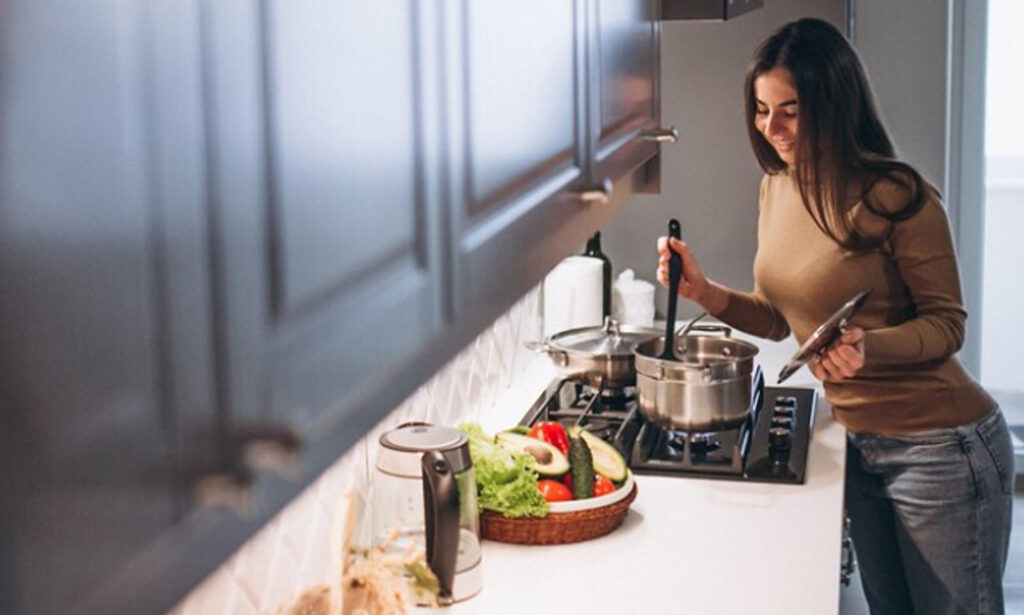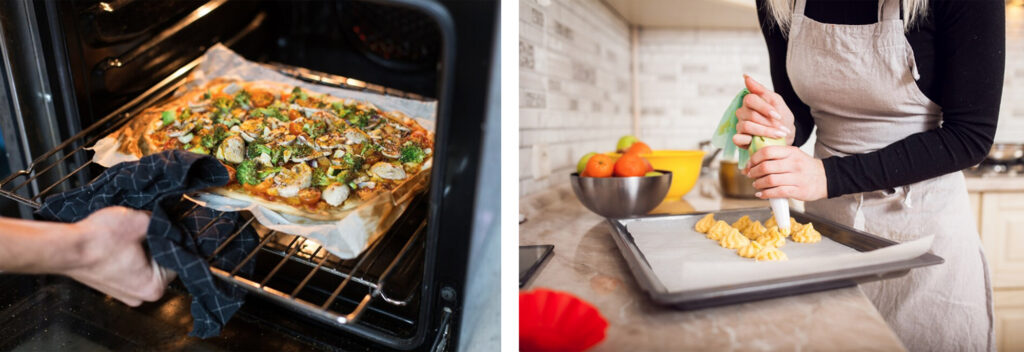Hooray! Summer is here! The days are longer and warmer, and my inner voice urges me to open doors, windows, and sunroofs, as well as my arms to bathe my heart and soul in summer’s essence. It seems I’m not the only one feeling this way. I see others waving from their open car windows, neighbors saying ‘hello’ from their open garage doors, passersby smiling and saying ‘what a beautiful day’, and so on. It seems June days are perfect for friendly chats, family gatherings, camping excursions, neighborhood potlucks, BBQs, tailgating, gardening, and so much more.
Summer invites us to bring friends together and gather on the patio. And whenever friends gather there always seems to be copious amounts of food in the center of the mix. Even though the food fills us with delight, it may be more deceiving than it appears. With that on my mind, June seems the perfect time to uncover some hidden household hazards lurking in our everyday life.
When we think of household hazards, our minds often jump to sharp objects, slippery floors, or electrical outlets. But, some of the most dangerous threats in our homes are ones we can’t see: heavy metals. The sooner we “see” these invisible gremlins, the sooner we can eliminate them and stay happy and healthy.
Heavy metals like lead, mercury, cadmium, arsenic, and aluminum lurk in unsuspecting places, posing health risks without any obvious warning signs. We’ve all heard about them and know they’re harmful, yet we don’t give them much thought. I think many people may not be aware of how sneaky they are. Over time heavy metals accumulate in the body, exposing us to toxic elements that lead to hormonal imbalances, neurological disorders, kidney damage, cancer, and more.
The effects of heavy metals can vary depending on the type, duration, and level of exposure, but even low-level, constant exposure can have serious consequences. Here are the most common heavy metals:
- Lead is linked to developmental delays, learning difficulties, and reduced IQ in children.
- Mercury affects the nervous system and is especially dangerous during fetal development.
- Cadmium can damage kidneys and bones and is a known carcinogen.
- Arsenic is associated with skin conditions, respiratory issues, and increased cancer risks.
- And last, but not least, is Aluminum. I believe that this heavy metal is the one that is overlooked the most and is even accepted as safe. I can no longer let it stay incognito; the time has come to expose its sinister effects.
Researchers consider aluminum a lightweight heavy metal. Labeling it lightweight immediately shifts the mind’s thinking that it’s not harmful and does not need to be taken too seriously. Considering that aluminum is the third most abundant element on the Earth’s surface, it finds its way into our daily life in various forms, e.g. the air, water, cookware, food, soil, cosmetics/personal care items/ medications, and more. All of a sudden, that lightweight heavy metal adds up to a lot of accumulation in our bodies. And that accumulation can result in respiratory and neurological disorders, bone diseases, hormone imbalances, and other mysterious ailments. Because it is everywhere, it’s unlikely it can be entirely eliminated from our homes, but there are things we can do to weaken its effects on us. The goal is to work with our body, not against it.
Since aluminum is in the food we eat, especially processed food, changing our food habits is a great starting place. That means we need to rethink the food we serve to our family and friends; plan easy menus around whole food instead of processed food. Aluminum is used in surprising ways in the food manufacturing process. It is added to cheese to help it melt smoother and cut easier, added to pickles to help them stay crunchier, added to cream cheese to make it creamier, etc. It can be added to food coloring, seasonings, flavorings, and even chewing gum. This is just the tip of the iceberg! If you are intrigued and would like to discover more about the ways aluminum is hidden in our world, I highly recommend reading “Hidden Food Ingredients: The “Industry Standard” Scam that Touches Everyone.”
Changing our food choices is a great first step, which leads to the next step of re-examining the kitchen and eliminating all aluminum from it. This is an ongoing process in my home, because I’m always surprised at the things that I didn’t ‘see’ initially, and then at some later time I suddenly “see” them! So, it’s a process and I smile to myself as I do away with magically appearing items. Staying with the process is very important because aluminum cooking equipment taints the wholesome ingredients you’ve lovingly prepared. And besides, eliminating aluminum helps declutter the kitchen!! Just remember, when you’re decluttering (detoxing) the kitchen, there is no looking back and reminiscing over “the way things have always been” or “that was my grandmother’s”; those days were learning curves and now it’s time to move forward with wisdom!
I grew up eating food prepared with aluminum utensils and cooked in aluminum cookware and bakeware. We even had aluminum drinking glasses, which were delightfully colorful but always hurt my teeth. Cooking with aluminum and eating from aluminum dishes is a direct path to contaminating our bodies which leads to weakening our immune system. The contaminated food eventually finds its way through our digestive system and into our cellular system, nerve system, skeletal system, tissues, organs, and so forth; for that reason, re-examining the kitchen is vital to you and your family’s well-being.
Since I understand how easy it is to not “see” all the aluminum in our life, I thought a list may help you get started:
- Aluminum pots, pans, Dutch ovens, and skillets
- Aluminum baking sheets, pizza pans, grilling racks, roasting racks
- Aluminum cake pans, pie pans, muffin pans, lasagna pans
- Aluminum utensils and tableware
- Aluminum tea kettles, tea strainers, stovetop espresso makers
- Aluminum ice cream makers
- Aluminum canning equipment
- Aluminum salt and pepper shakers or spice containers
- Aluminum drinking glasses, mugs, travel thermoses
- Aluminum decanters, platters, decorative serving dishes
- Aluminum camping cookware
- Aluminum foil! (This is a biggie!)
- Disposable aluminum baking pans (These are often used for potlucks, BBQs, tailgating, receptions, taking food to friends, and catering. Since they are easily dented and scratched, more toxins leach into the food.)
If you have vintage cooking items or inherited items, make sure to examine those, too. It’s almost like a scavenger hunt; keep a sharp eye out every day as you instinctively use items.
Eliminating things means that some items will need to be replaced while some need to stay eliminated. Decide which items are essential and which are never (or rarely) used. The goal is to simplify, making the kitchen a delight to cook in. Reduce your cookware to a few key sizes, then, let the extraneous paraphernalia go.
The next step is to decide what the aluminum should be replaced with. Many sources recommend good-quality stainless steel, ceramic, cast iron, or glass. I have discovered that there are considerations with all of these options. I encourage you to research what is best for your needs. Here are some insights about those options:
- Stainless steel does not leach aluminum into the food, but it does leach nickel and chromium; the longer the cooking time, the more pronounced the leaching, especially with acidic food. If the stainless steel becomes scratched, the leaching is more evident. Even though researchers claim the leaching is minimal, it is something to be aware of and take into consideration.
- Ceramic cookware is rapidly becoming a trend. There are two kinds of ceramic cookware: ceramic coated and solid ceramic. Ceramic coated is like other coated cooking items, if the coating becomes scratched or worn, it can contaminate the food. The industry recommends replacing ceramic coated cookware every few years. Having coatings fail has happened in the past, you may recall that Teflon coatings came off into the food, which resulted in Teflon coatings being restricted, and in some regions being phased out. On the other hand, solid ceramic cookware is a much better choice, it’s more expensive (of course), but if you have reduced the number of pots and pans in your kitchen, paying more for solid ceramic is my recommendation. They are easy to clean and not as heavy as cast iron.
- Cast Iron is a traditional standard and will last for generations. Cast iron cookware offers durability, excellent heat retention, and has natural non-stick properties with seasoning, but it also has drawbacks like weight, slow heating, and the need for hand-cleaning and seasoning. It can also react with acidic foods. Even so, I love how muffins and cornbread turn out when using cast iron.
- Glass is another great replacement for aluminum. There are basically 3 different glass compositions found in a kitchen; don’t worry, the manufacturers will use the best glass for the end use, just make sure that when extreme temperature changes are important (freezer to oven) borosilicate glass is the best choice. There are glass options for most of the items on the “eliminations” list above, even glass-lined thermoses and ice cream makers, and various cookware choices.
- Baking Stones are another great aluminum replacement. I love my stones! Cookies, biscuits, pizzas, and bread turn out beautiful. Baking stones are another hand-clean item, but it only takes a second and is well worth the effort.
Eliminating aluminum cookware is one thing, but how can aluminum foil be eliminated? Believe it or not, it can! I haven’t had aluminum foil in my kitchen for years.
Just like disposable aluminum bakeware, foil is a huge hidden hazard! It can significantly contaminate food because it is pliable and easily punctured. For instance, when a potato is wrapped in foil and then punctured to let steam out, the potato has just been contaminated with aluminum. The same is true when foil is wrapped around an item that will be stored for hours or days; the toxins from the foil are infiltrating the food. Then when the food is taken from the refrigerator to the oven the contamination accelerates. In this instance, I use resealable borosilicate glass containers that can easily be reheated. Additionally, when a recipe says to cover the dish with foil, I lay unbleached parchment paper over it instead. Parchment paper is typically safe for use in an oven up to 420-450°F (215-232°C). I have even loosely wrapped an item and steamed it in unbleached parchment paper, and I’ve also lined baking dishes to prevent food from sticking. Using it as a liner not only eliminates oiling the pan, it makes cleanup a snap.
We can’t eliminate all risks, but awareness is the first step toward creating a healthier home. By being mindful of what we bring into our living spaces and how we maintain them, we can reduce our exposure to heavy metals and protect our long-term well-being.
I’m always amazed that the more I know, the more I realize what I didn’t know. But, once I know, my mind expands and soars! So now that you know what you didn’t know before, where does that take your mind? What is your next step?





Leave A Comment